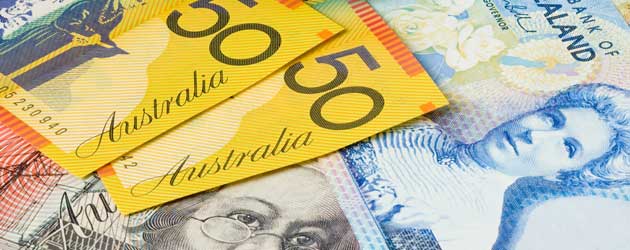 Panic selling by FX trades sent high-risk currencies tumbling to multi-year lows during London trade on Thursday. Both the Aussie and Kiwi Dollars were hit hard as sentiment continued to erode as fears of a global recession weigh. Earlier, the Australian central bank announced efforts to stabilize prices through a program of government debt purchases which helped to boost confidence in the bond market there; earlier 10-year bond futures saw its largest single day fall in nearly 30 years, while 3-year bonds hit a 4-year trough. Philip Lowe, the governor of the Reserve Bank of Australia, said the operation would begin on Friday and currently had no end date. That news helped to ease the pressure on the Australian Dollar.
Panic selling by FX trades sent high-risk currencies tumbling to multi-year lows during London trade on Thursday. Both the Aussie and Kiwi Dollars were hit hard as sentiment continued to erode as fears of a global recession weigh. Earlier, the Australian central bank announced efforts to stabilize prices through a program of government debt purchases which helped to boost confidence in the bond market there; earlier 10-year bond futures saw its largest single day fall in nearly 30 years, while 3-year bonds hit a 4-year trough. Philip Lowe, the governor of the Reserve Bank of Australia, said the operation would begin on Friday and currently had no end date. That news helped to ease the pressure on the Australian Dollar.
As of 10:11 am in London trading, the AUD/USD was trading lower at $0.5723, a loss of 0.916% and off the earlier low of $0.55069. The NZD/USD was also trading down at $0.5664, a decline of 1.1747%; the pair has ranged from a trough of $0.54668 to a high of $0.57529.
The US Dollar, as a safe haven currency, continues to find favor as the fallout of the Coronavirus expands. The GBP/USD was trading at $1.1519, down 0.5061% while the EUR/USD was lower at $1.0807, down 0.9358%. The USD/JPY was up at 109.1420 Yen, a gain of 1.12%; the pair has ranged from a low of 107.833 Yen to a peak of 109.563 Yen. Later today, market players are likely to react to the labor data out of the US; initial jobless claims for the period ending March 13th is expected to show a rise to 220,000 from 211,000. The 4-week average is also likely to have climbed. The Federal Reserve’s Manufacturing Survey from the Philadelphia branch is also due to be released with analysts calling for a sharp drop in the reading to 10 from 36.7.
